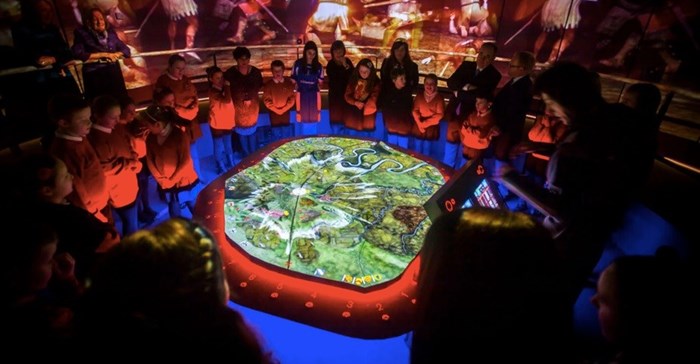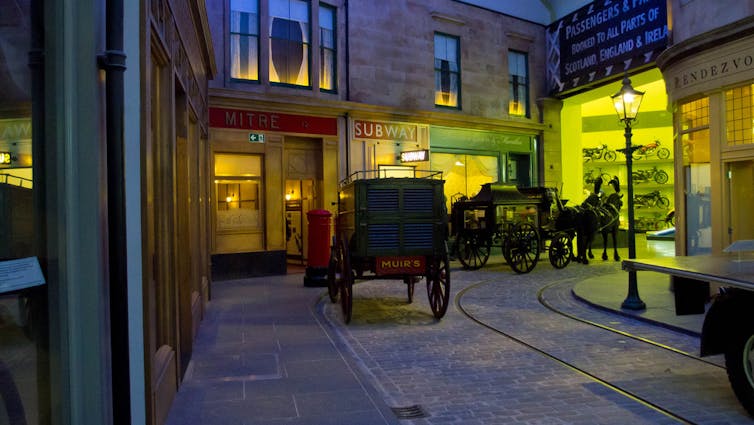Tourist attractions are being transformed by immersive experiences - some lessons from Scotland

From here, visitors move into the battle room, an arena in which up to 30 players gather round a computerised plan of the battlefield. They play the part of Bannockburn generals, with a real-life battle master enabling them to make strategic decisions to see if they could have done a better job than the leaders on the day.
It’s the sort of immersive experience that many tourist attractions want to have these days. At the Burns Birthplace Museum in Ayrshire, dedicated to Robert Burns, visitors can download an app aimed at children called the Mighty Mission Trail. It sends them on a virtual treasure hunt throughout the site and surroundings. Inside the museum is also a multimedia room, with interactive touchscreens that encourage children to spear haggises and scan poems by the Scottish bard.
Go north to Culloden near Inverness – the most visited battlefield site in the UK – and the solemn brutality of the conflict assails tourists in surround video. Or there is the Riverside Museum in Glasgow, where one of the star attractions is an entirely reconstructed street from the early 20th century. Visitors can loiter in a spit-and-sawdust bar; make a trip to the cobblers; or just keep clear of the horse and carriage in the middle of the road – complete with touchscreens to find out more as they explore.

With virtual reality and augmented reality becoming major growth stories, they are likely to enhance tourists’ desire for immersive experiences in future. Virtual reality headsets are already creeping into tourism – the British Museum used them for a temporary exhibition on Bronze Age roundhouses, for instance. Though in many cases, headsets are going to be too isolating to be suitable in castles or museums, there is a culture developing alongside them that goes hand-in-hand.
This matters hugely in Scotland, which has the most visited cultural and heritage visitor attractions in the UK outside London. After a long period of growth, Glasgow and Edinburgh now attract 17m visitors a year on their own: some five times the population of the Scottish central belt. Tourism is a major driver of the Scottish economy; it is worth some £6 billion a year, about 5% of GDP, and supports 207,000 jobs. It’s therefore vitally important that the industry is alert to shifting tastes and reacts accordingly.
Our research
But if immersive experiences are a growth opportunity, there is little evidence about visitor preferences. To help rectify that, I’ve been leading a project known as the Scottish Heritage Partnership. One of 32 projects funded by UK Research and Innovation in this area, it is the only one focused on what audiences expect and want from such attractions in the longer term.
We distributed questionnaires at five major Scottish visitor sites – Bannockburn, the Burns Museum, Culloden, the Riverside and the National Library of Scotland – while also carrying out observations and in-depth interviews. Between them, these sites attract some 3m people each year. We received 268 detailed responses to our questionnaires, and combined this with our other research to reach the following conclusions:
- While audiences like immersive visitor attractions, they particularly like the ones that combine virtual and physical experiences with a strong storyline. The battle experience at Bannockburn works well, for instance, where you play with other people and there’s a member of staff to act as a guide.
- When the experience is purely a simulation, audiences like to be able to handle objects at the same time. They can do this at Culloden, for example, where there are certain artefacts at the visitor centre such as 18th-century guns that are available to touch. We found that while people prefer physical objects, even being able to handle virtual objects is better than nothing – the British Museum exhibition allowed visitors to explore objects from different angles, for instance.
- Over 55s, which are the core visitor demographic for these kinds of sites, prefer the likes of the reconstructed street and old Glasgow subway at the Riverside to digital simulations. Under 35s are the most comfortable with digital and virtual reality simulations, and also much more likely to want to experience them remotely – something for heritage organisations to think about in future.
- Digital simulations are good for getting visitors to stay longer in a small space. This can either maximise the use of space or cause congestion, depending on the popularity of the experience.
- We assumed that more visual experiences would need less narrative, but the opposite is actually true. Visitors saw information as important regardless of the mode of delivery.
Hopefully these insights will help organisers in this industry to make decisions about what to commission on their sites in future. The clear message is that you can achieve more with immersive experiences if you give people what they want. As virtual and augmented reality increasingly change how we think about these tourist attractions, this will become ever more important in years to come.
This article is republished from The Conversation under a Creative Commons license. Read the original article.